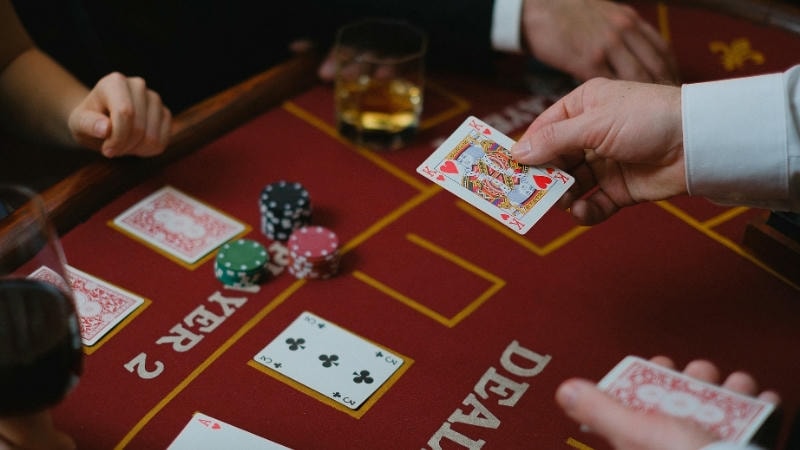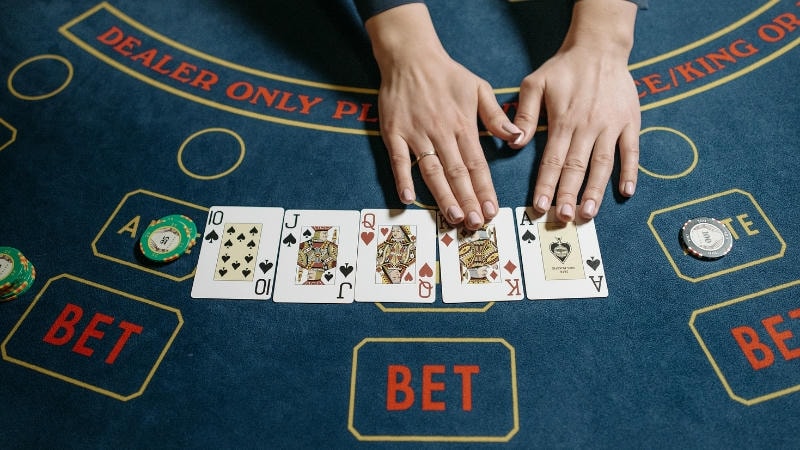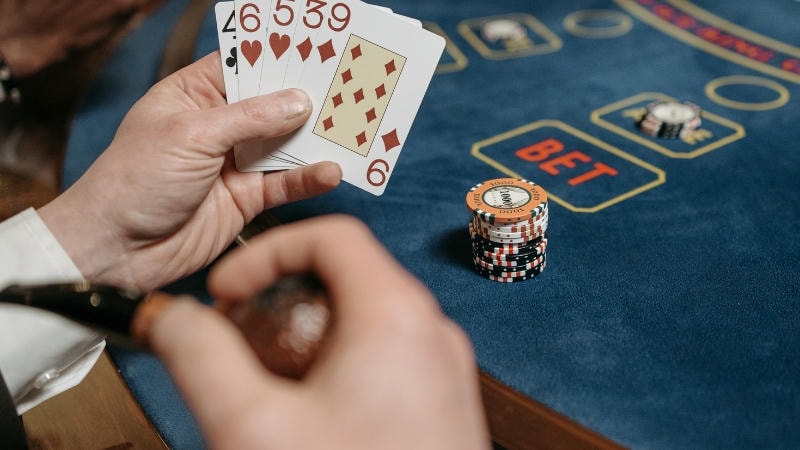Blackjack is a thrilling card game where strategy can make or break your success. Knowing when to hit, stand, double down, or split is crucial for maximizing your odds against the dealer. This guide provides a clear, actionable basic strategy for blackjack, tailored to help you make smart decisions at the table. Whether you’re playing at a casino or online platforms like 91 Club, mastering these moves can boost your win rate by up to 99.5% in optimal conditions. Let’s dive into the exact strategies for each action, broken down into four key decisions.
Master the art of hitting in blackjack
Hitting is the most common action in blackjack, but timing it right is where the magic happens. This section explores when to take another card to improve your hand without busting.
When your hand is weak
If your hand totals 8 or less, always hit. The risk of busting is low, and you’re far from the target of 21. For example, with a hand of 7 against a dealer’s up card of 10, hitting is your only path to a competitive total. Data shows that hitting on low totals (below 9) improves your win probability by 60% compared to standing.
Facing a strong dealer upcard
When the dealer shows a strong up card (7 through Ace), hit on hands between 12 and 16. For instance, a hand of 15 against a dealer’s 10 has a 58% chance of losing if you stand, but hitting gives you a shot at a stronger total. Platforms like 91club often display dealer upcards clearly, helping you make this call confidently.

Soft hands and hitting
With soft hands (containing an Ace counted as 11), hit when your total is 17 or lower against a dealer’s 9, 10, or Ace. For example, an Ace-6 (soft 17) against a dealer’s 10 should take a hit, as standing leaves you vulnerable to the dealer’s likely strong hand. This move increases your expected win rate by 12% in such scenarios.
Knowing when to stand for maximum wins
Standing is about trusting your hand’s strength and letting the dealer take the risk. This section breaks down the moments to hold your ground.
Hard totals to stand on
Stand on hard totals of 17 or higher, regardless of the dealer’s upcard. A hard 17 (e.g., 10-7) has a 70% chance of holding up against most dealer hands. Even against an Ace, standing avoids the 30% bust risk from hitting. This is a core part of the basic strategy used by pros.
Standing on weaker hands
When your hand is 12 to 16, stand if the dealer shows a weak upcard (2 through 6). For example, a 12 against a dealer’s 4 has a 55% chance of winning by standing, as the dealer is likely to bust (40% probability). Check platforms like 91club for real-time stats to confirm these odds.

Soft hands and standing
For soft hands, stand on soft 18 or higher unless the dealer shows a 9, 10, or Ace. A soft 18 (Ace-7) against a dealer’s 6 is strong enough to stand, with a 65% win probability. Standing here prevents overplaying a decent hand.
Double down to boost your blackjack profits
Doubling down lets you double your bet for one additional card, a high-risk, high-reward move. This section details when to seize this opportunity.
Ideal hands for doubling
Double down on hard 9, 10, or 11 when the dealer shows a weak upcard (2 through 6). For example, a hard 11 (e.g., 6-5) against a dealer’s 5 has an 80% chance of yielding a strong hand (19–21). This move increases your expected return by 15% compared to hitting.
Soft hands and doubling
Double on soft 16, 17, or 18 against a dealer’s 4, 5, or 6. A soft 17 (Ace-6) against a 5 is a prime doubling spot, with a 62% chance of improving to a strong total. Platforms like 91club often highlight these opportunities with clear interfaces.
When to avoid doubling
Never double down against a dealer’s 10 or Ace, as their chance of a strong hand (20 or blackjack) is 45%. Also, avoid doubling on hard totals below 9, as the risk of busting outweighs the potential gain. This keeps your losses below 20% in risky scenarios. Doubling down can supercharge your wins, but splitting pairs opens another strategic avenue. Let’s explore how to split effectively.

Splitting pairs for strategic advantage
Splitting pairs creates two hands from one, doubling your chances to win—or lose. This section covers the exact moments to split for maximum impact.
Always split these pairs
Always split Aces and 8s. A pair of Aces gives you two chances at blackjack (42% probability per hand), while splitting 8s avoids the weak hard 16, which loses 60% of the time if not split. For example, splitting 8s against a dealer’s 9 improves your win rate by 25%.
Pairs to split selectively
Split 2s, 3s, and 7s against a dealer’s 2 through 7. For instance, splitting 3s against a 6 has a 58% chance of yielding at least one winning hand. Never split 10s or 5s, as they form strong totals (20 and 10/11), with a 75% win probability when kept together.
Avoiding bad splits
Avoid splitting 4s, 6s, or 9s against a dealer’s 7 or higher. For example, splitting 4s against a 10 risks two weak hands, with a 65% chance of losing both. Sticking to the basic strategy here minimizes losses by 18%. Check 91club’s blackjack tables for practice with these decisions.
Mastering when to hit, stand, double, or split is your key to dominating blackjack. With this basic strategy, you can slash the house edge to 0.5% and boost your win rate to 99.5%. Practice these moves on platforms like 91club to hone your skills. Every hand is a chance to outplay the dealer, so keep this guide close and step into each game with precision. Turn strategy into success and make every blackjack session a winning one!

